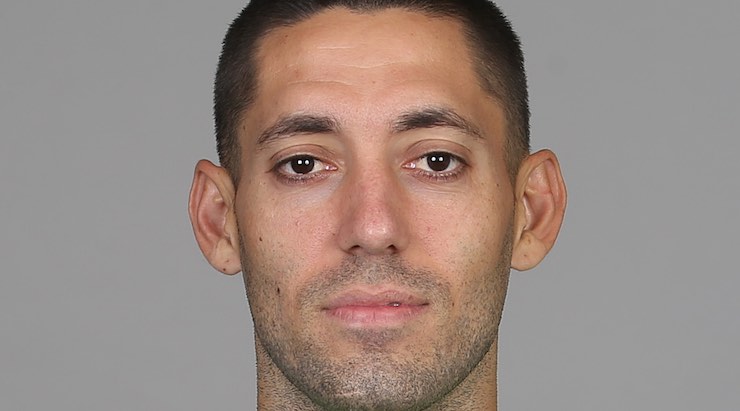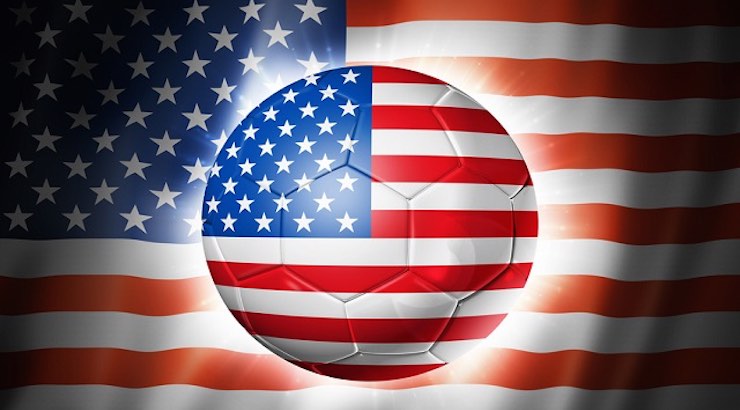US Soccer – Leadership Academy: Leadership Through Diversity
US Soccer has many plans to grow soccer in the USA – and, one plan in particular focuses on respecting a founding principal of our country: diversity, and seeking to identify players in remote and underserved areas of the our country.
 From The US Soccer’s Mission Statement for Leadership Through Diversity
From The US Soccer’s Mission Statement for Leadership Through Diversity
“We will create the road map to success so all under-served soccer players from all backgrounds can reach their full potential in soccer, education, work, health and life.”
Opening with a definition of Diversity & Inclusion, the US Soccer’s plan for leadership through diversity is focused on creating a brighter future for American soccer – a future that reflects and includes all Americans.
One of the goals is to reach into the underserved communities – the areas in the USA that are disadvantaged – and find those gems who are outside our existing soccer system. Yes, this is a search for identifying players who can impact our performance on the soccer field.
While it may be hard to imagine that there are large numbers of soccer groups in under-served communities that are unaffiliated from the wide spread soccer system thriving in most suburban and urban areas but yes, there are many and mostly Hispanic soccer players and leagues which are disconnected from US Soccer.
US Soccer wants to penetrate these meccas of soccer by serving the needs of area community leaders and offering a leadership academy. The goal is simple – the USA should be able to develop better players if we can strengthen community leaders’ abilities to produce better programs. Makes sense – but how?
US Soccer’s idea is to provide programs that will provide training on the various tools needed for great leadership including:
- Business and Financial Acumen
- Time Management
- Organizational Change Management
- Non-profit Organization Compliance
- Problem Solving & Decision Support
- Persuasive Leadership & Communication
- Strategic Stakeholder Management
US Youth Soccer’s state association in Southern California implemented the Cal South Leadership Academy earlier this year and found a startling discovery. The leaders of youth soccer clubs – those who had been doing the job for decades as well as former professional players who had traded their cleats for the responsibilities of Director of Coaching – all wanted the training, not just the young, up and coming hopefuls who might one day assume a leadership role.
Whether on a national level or a local level, the idea of a progressive and synergistic learning program to help community leaders overcome barriers, become more productive, and more effectively lead their organization has been well received. Educating community leaders and arming them with the tools needed to be more effective will have a positive impact on soccer in America.
Cal South’s president Derek Barraza often asks, “Who is training our leaders?” The answer, up until recently, is often no one.
Is creating an army of leaders who can help bring soccer to the next level the best way to win on the world stage? Perhaps, but it is definitely the road to improvement which will pay dividends for generations. After all, isn’t education what our forefathers depended upon when they wrote the constitution?
US Soccer’s Mission Statement for Leadership Through Diversity
“We will identify the challenges, create the road map to success, forge partnerships with corporations, non-profit organizations and individuals who will help us develop programs and services that allow the under-served soccer players from all backgrounds to reach their full potential in soccer, education, work, health and life.”
Definitions:
Diversity includes all the ways in which people differ, and it encompasses all the different characteristics that make one individual or group different from another. It is all-inclusive and recognizes everyone and every group as part of the diversity that should be valued. A broad definition includes not only race, ethnicity, and gender — the groups that most often come to mind when the term “diversity” is used — but also age, national origin, religion, disability, sexual orientation, socioeconomic status, education, marital status, language, and physical appearance. It also involves different ideas, perspectives, and values.
Inclusion is the act of creating environments in which any individual or group can be and feel welcomed, respected, supported, and valued to fully participate. An inclusive and welcoming climate embraces differences and offers respect in words and actions for all people.
The US Soccer Diversity Task Force is the driving force behind this effort. Lisa Levine is the US Soccer Staff Liaison and Doug Andreassen is the Committee Chair. Committee Members include: Chris Armas, Derek Arneaud, Derek Barraza, Lynn Berling-Manuel, David DeLeon, David Dodd, Luis Montoya, Diego Munoz, Tiffany Roberts-Sahaydak, Cara Rooney, Brad Rothenberg, Shonna Schoedl, Don Shepard, David Testo, Alfonso Vargas, Kathryn Yaktrakis, Jose Zarate and Will John.
A year ago, Sports Illustrated wrote U.S. Soccer turning to overlooked youth to discover next wave of talent which tells the tale of Clint Dempsey and his roots in a small and often unheard of town in Texas – proof that there is talent hidden in underserved communities all across America.
Most Americans aren’t familiar with Nacogdoches, Texas, and if they are it’s probably because of Clint Dempsey. Nacogdoches is a small town of less than 35,000 people in East Texas, roughly 150 miles from Houston and Dallas. Dempsey, the only American ever to score in three World Cups, grew up playing soccer on dirt fields against Hispanic immigrants in his town. Read More.
Clint Dempsey started all four of the US Men’s National Team 2014 FIFA World Cup games and first signed in 2004 with the New England Revolution and then in 2013 with the Seattle Sounders.  Dempsey is an American soccer hero who has earned many honors and made a big impact overseas in England, playing for Fulham where be broke the club’s Premier League goalscoring record in 2011.
Dempsey is an American soccer hero who has earned many honors and made a big impact overseas in England, playing for Fulham where be broke the club’s Premier League goalscoring record in 2011.
A plan for reaching underserved communities and connecting future soccer stars with US Soccer can build a better future for our country – and one that can be more united as we strive for success on soccer fields at the World Cup.
Diversity and Inclusion definitions are from the University of California, Berkeley Division of Equity and Inclusion






